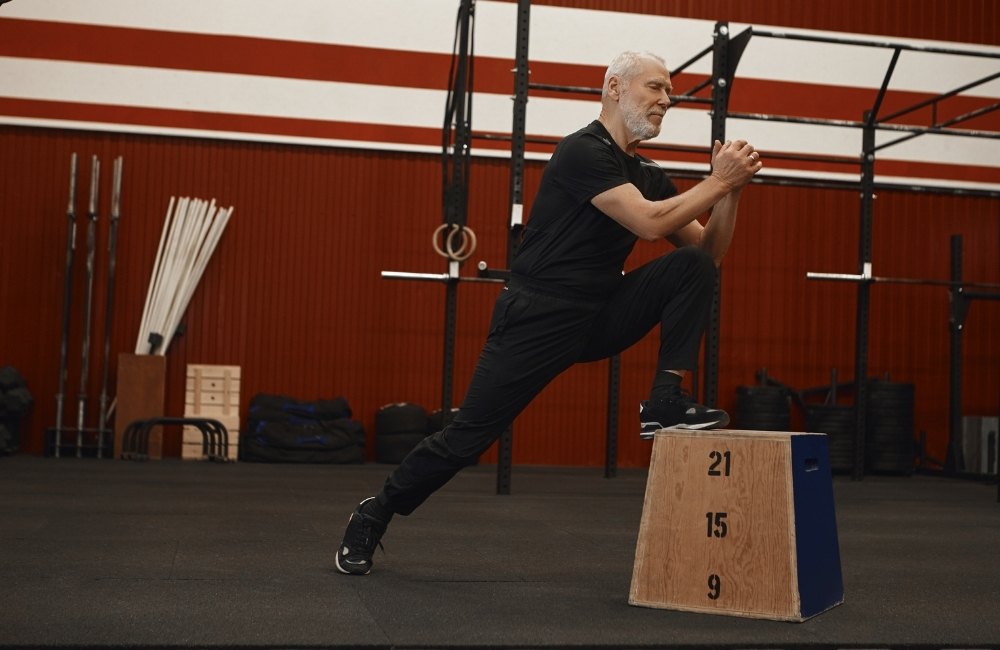
If there’s one part of your body you need to maintain your strength and flexibility as you age is your hips. Having good strength in your hips means better mobility, flexibility, and range of motion. It’s essentially the key to healthy aging and better quality of life.
Unfortunately, many older people suffer from frailty and weakness, which can often lead to falls. Falls in those over the age of 60 are associated with prolonged hospital stays, reduced independence, and even death.
Luckily, there are some easy ways to keep yourself strong, flexible, and stable later in life.
One such way is to increase strength and mobility throughout the hip region.
You’ll also like:
Over 60? These Are The 5 Best Exercises You Should Be Doing
The 3 Best Exercises That’ll Reinvent Your Body in Your 60s and Beyond
Healthy Hips = Healthy Aging
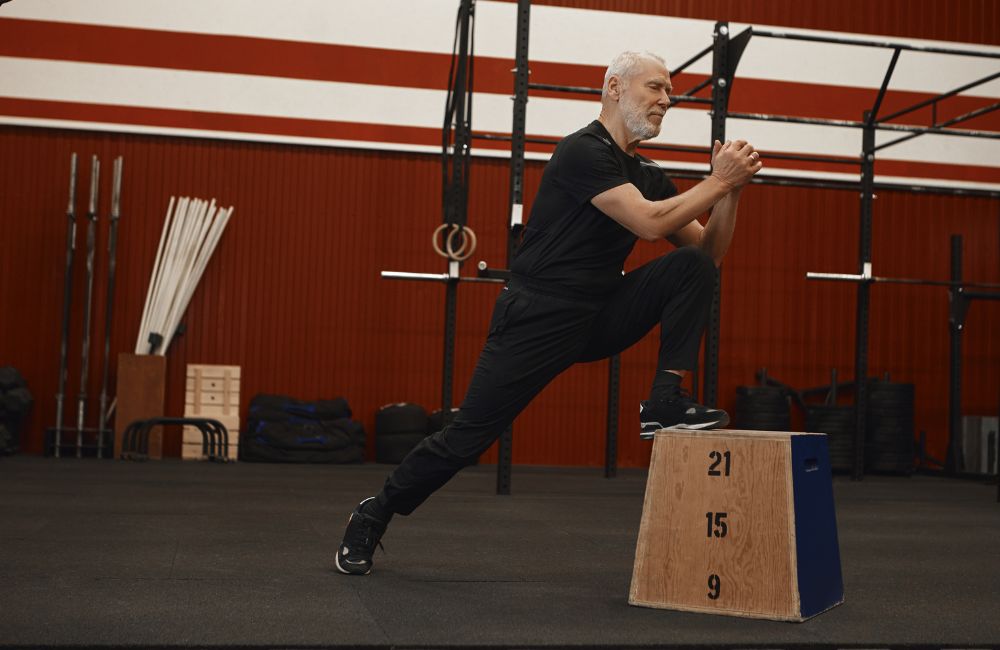
The benefits of keeping your hips healthy are numerous.
Why is this region so crucial for healthy aging? Well, for one thing, our hips provide stability for nearly every action we perform.
This portion of the body can be thought of as a stable base that allows us to reach, kick, walk, and move our other body parts freely.
Therefore, when the hips are weak and unstable, it becomes very difficult to do the things we want to do. Furthermore, weak hips are easier to fracture. As you may know, a hip fracture in an older person often results in a tragic outcome.
The Best Hip-Strengthening Exercises
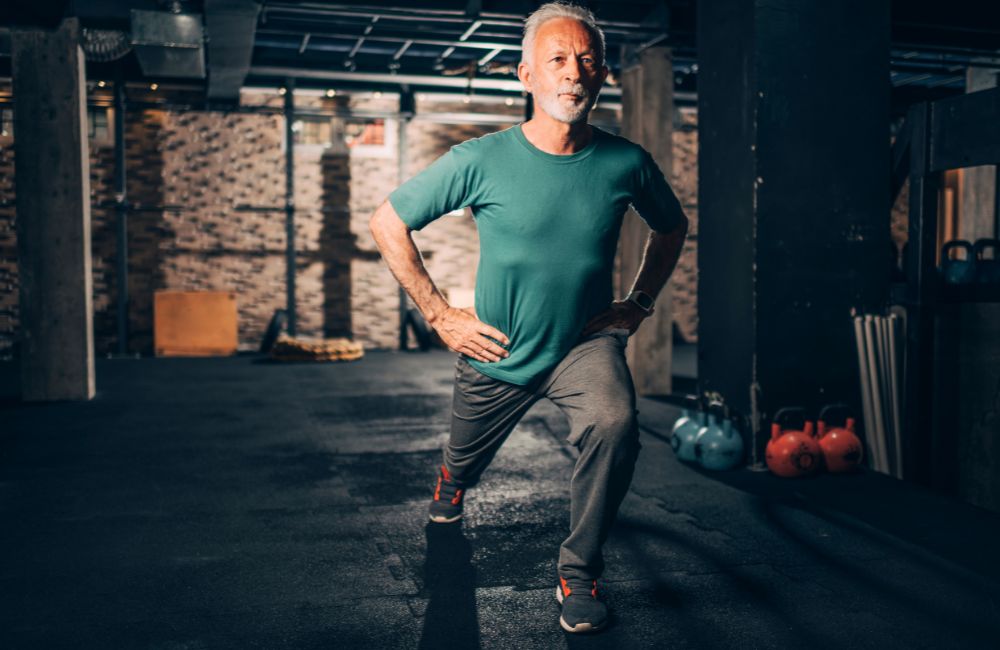
In this section, I’ll outline some of the best hip-strengthening exercises you can do to keep your hips healthy.
Try these moves out 3-4 times a week, unless otherwise indicated, and you may notice that your stability and hip health increase dramatically!
1. Banded Sidesteps
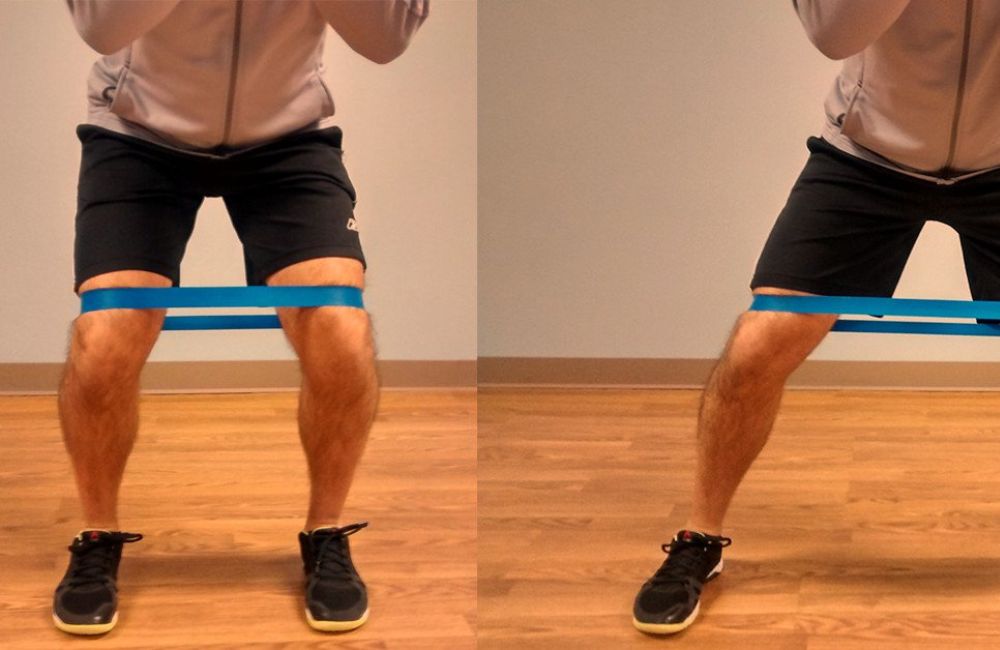
Resistance bands are cheap, easy to store, and great for strength training.
Furthermore, using bands for glute exercises, such as the side step, can go a long way toward improving hip stability.
How to Perform
- Place the looped resistance band around your thighs, just above your knees.
- Bend your knees slightly.
- Slowly, take a step out to the side with your right leg, keeping your toes pointed forward.
- Next, take a small step with your left leg in the same direction.
- Continue to shuffle toward the right side of the room until you’ve taken about 10 steps.
- Then, reverse the process and start walking in a leftward direction.
- Complete 10 laps in this manner during each session. Perform 3-4 sessions per week.
2. Banded Clamshells
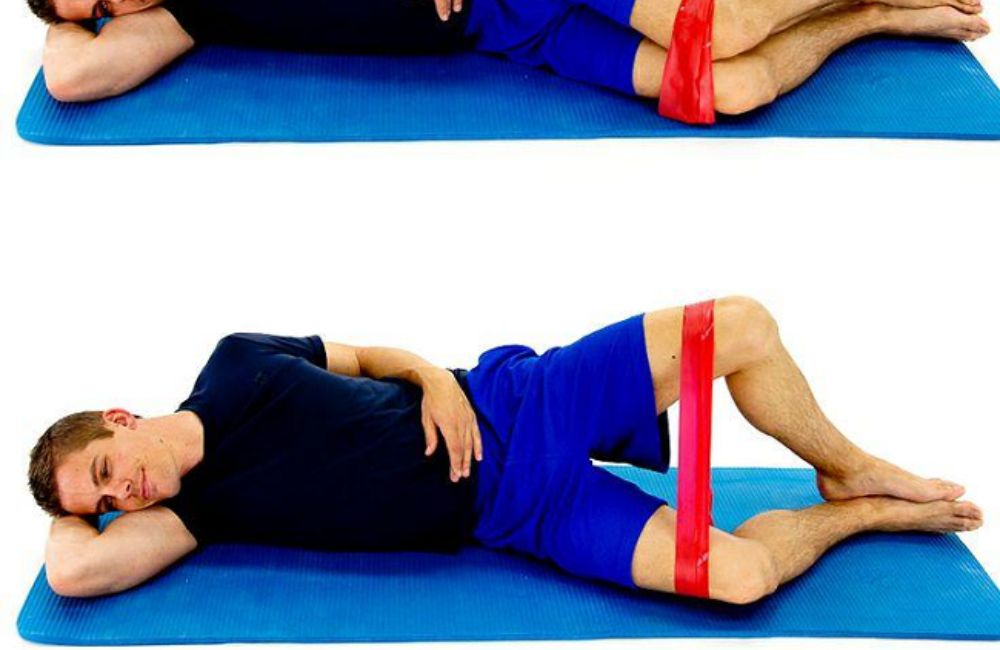
If you’ve ever had to have physical therapy for any ailment of the lower body or back, you’ve probably performed clamshells.
This exercise is great for strengthening the glutes, abs, and external rotators of the hips.
How to Perform:
- Place a looped resistance band around your thighs, just above the knee joints.
- Lie down on your right side with your knees bent comfortably. Both of your feet and both of your knees should be stacked on top of one another.
- Without moving your trunk, slowly lift your left knee toward the ceiling, keeping your knees bent and your feet in contact with one another.
- Hold this position for 3 seconds, then return to the starting position.
- Complete 10-12 reps per side, for 3 sets per session, 3-4 sessions per week.
3. Single Leg RDLs
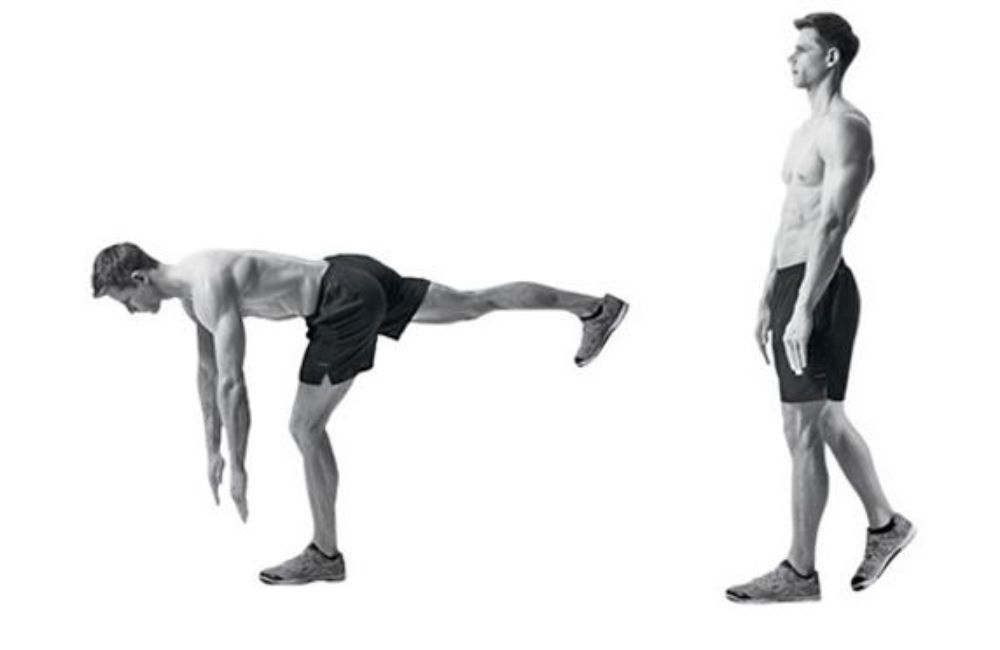
Deadlifts are an extremely functional movement. The single-leg Romanian deadlift (RDL), is a great way to improve balance, back stability, and glute/hamstring strength. Best of all, you can add weight to this exercise once it becomes too easy.
How to Perform:
- Stand on your right leg.
- Keeping your back straight, slowly bend forward with a very slight bend in your right knee.
- At the same time, kick your left leg behind you.
- In order to return to the starting position, squeeze your right glute muscles.
- Repeat 10-12 reps per side, for 3 sets per session, 3-4 times per week.
4. Butterfly Stretch
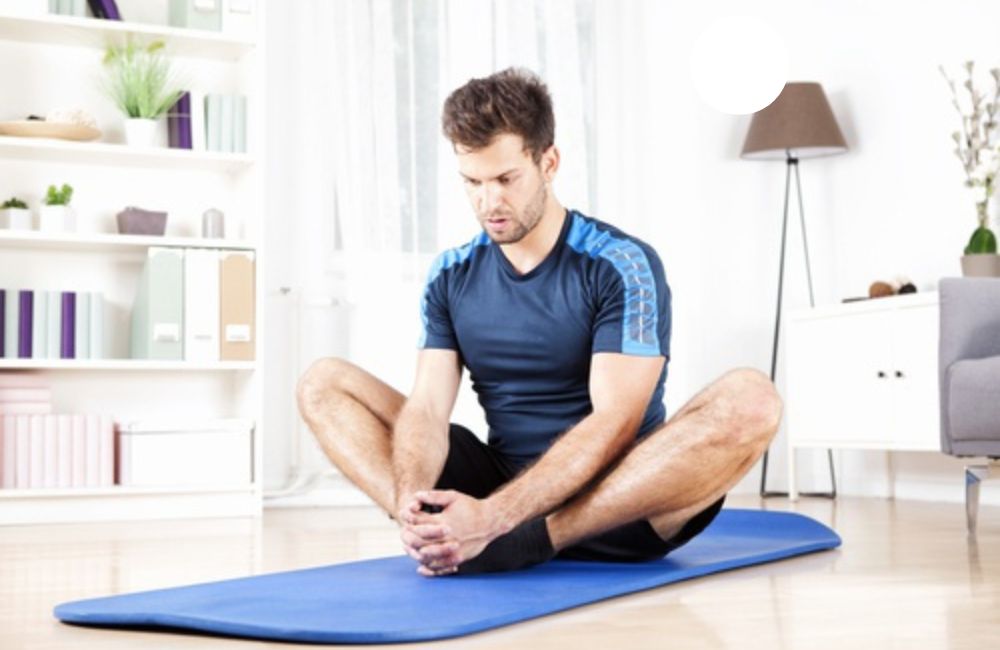
The inner thighs often become very tight as we age. These muscles don’t get used very much and, as a result, we pay very little attention to them. However, keeping them flexible is a major key for hip health.
How to Perform:
- Sit on the ground with your back straight.
- Place the soles of your feet in contact with one another.
- Use your hands to keep your feet in place and, if you are able to, use your elbows to push your thighs toward the ground.
- Hold this stretch for 30 seconds, repeat 4 times, and complete at least 3 sessions per week.
5. Bridges
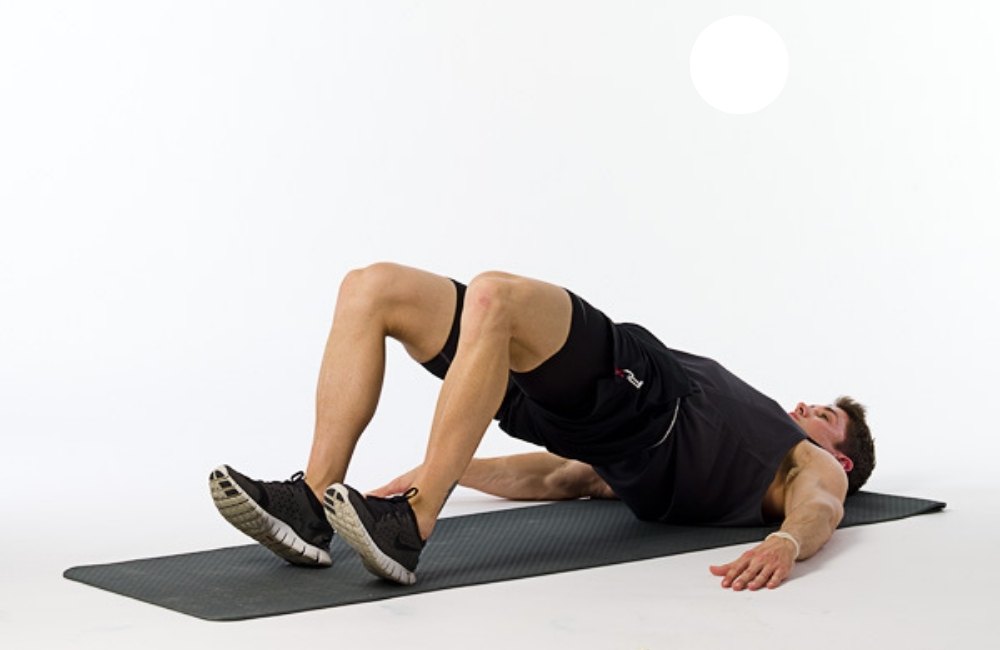
Bridges are an awesome exercise for many different conditions. For instance, low back pain can often be addressed through bridges, as can sciatica and many other orthopedic ailments.
This exercise is particularly useful because it can be modified in tons of ways to make it harder or easier.
How to Perform:
- Lie flat on your back with your knees bent and your feet flat on the floor.
- Slowly, raise your buttocks off of the ground by pushing into the ground with your heels.
- Once you’ve raised up as high as you can, hold for 3 seconds, then return to the ground.
- Complete 10-12 repetitions for 3 sets, 3-4 times per week.
Conclusion
Hip exercises are a great addition to any healthy lifestyle plan. However, not all hip strengthening and mobility exercises are appropriate for everyone. Make sure you talk with your doctor before you embark on this, or any, exercise program.
Works Cited
- Amarilla-Donoso, F. J., López-Espuela, F., Roncero-Martín, R., Leal-Hernandez, O., Puerto-Parejo, L. M., Aliaga-Vera, I., Toribio-Felipe, R., & Lavado-García, J. M. (2020). Quality of life in elderly people after a hip fracture: a prospective study. Health and quality of life outcomes, 18(1), 71. https://doi.org/10.1186/s12955-020-01314-2


